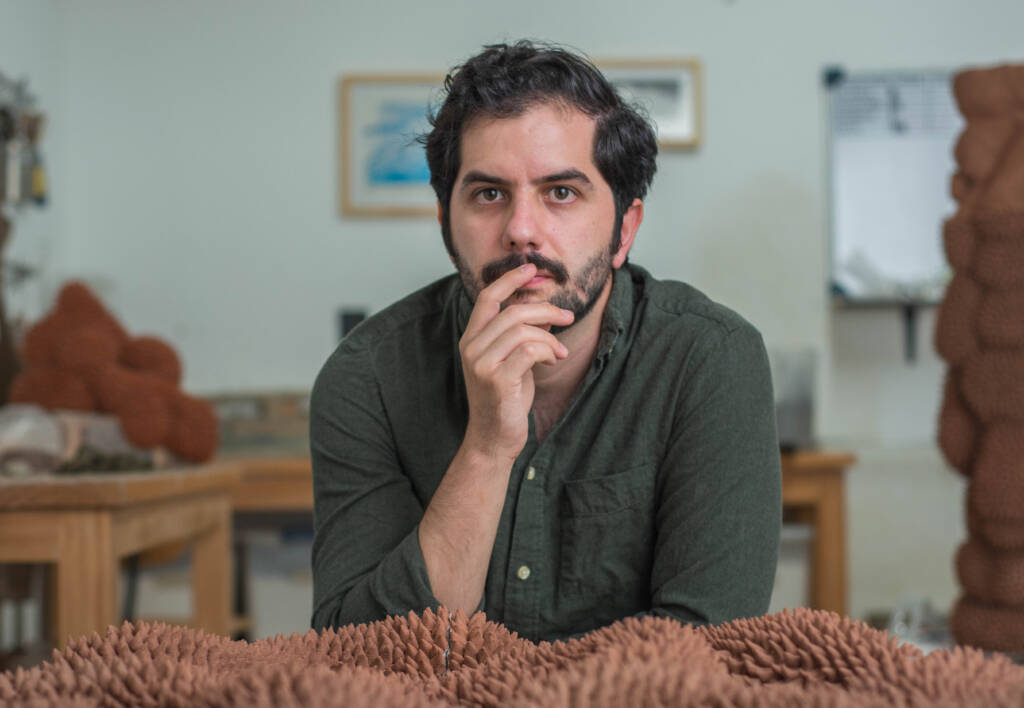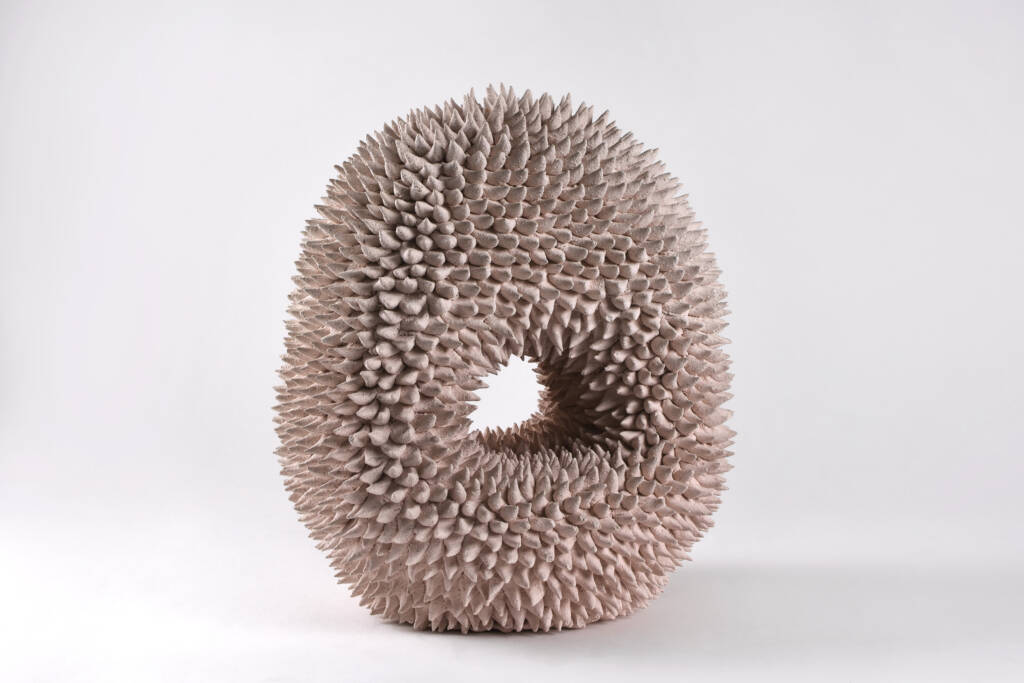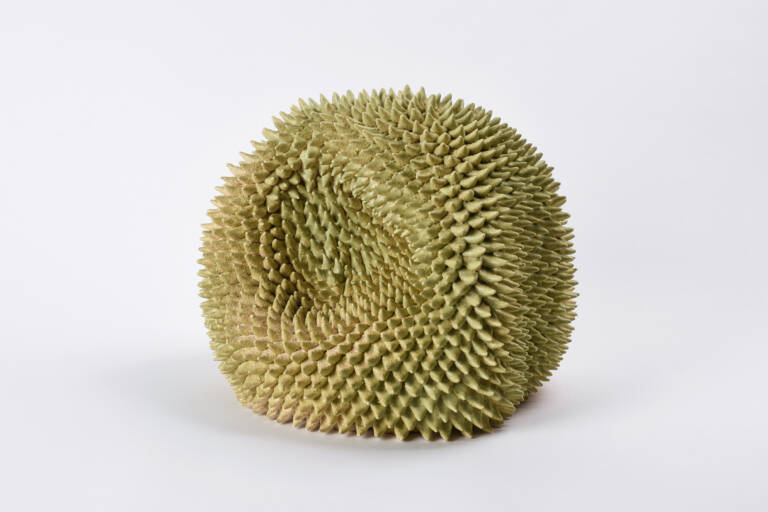

How do you create something that feels alive but resists definition? At just 33, Andrés Anza has mastered the art of ambiguity, crafting ceramic sculptures that teeter between organic life forms and abstract dreams. His spiked, textural creations evoke curiosity and challenge perceptions, inviting viewers into a world where tradition meets modernity. Fresh off his win at the 2024 Loewe Foundation Craft Prize, Anza opens up about his inspirations, the dialogue between material and maker, and why imperfection lies at the heart of his work.
hube: Your award-winning piece I Only Know What I Have Seen is a striking combination of figurative and abstract elements. How do you decide which forms to keep recognisable and which to leave mysterious?
Andrés Anza: This piece is part of my entire body of work – part of the language I’ve been developing over time. I like to take objects or elements from nature that feel familiar to us, shapes that make you think you know what you’re looking at. But at the very end, they’re actually nothing – they come from the imaginary.
It’s important for me to grab inspiration from nature but not let it dominate. People often ask if I’m inspired by corals or underwater life because they feel an oceanic connection in my work. But I deliberately avoid looking at images of these things. I don’t want to be influenced in a way that makes my work a portrait of something that already exists. My goal is to keep it in this in-between space: a naive, imaginary connection to nature, yet something that feels like it could belong to an ecosystem.
h: Your work often creates organic shapes that seem almost alive. Is there a reason you’re drawn to creating forms that challenge our perception of living vs. non-living?
AA: I want to create forms that feel alive – so alive that they make viewers uncomfortable because they can’t quite describe what they’re seeing. When something challenges you, it sparks curiosity. That’s when you start forming a personal relationship with it.
These forms are like abstract portraits of humans. Just as we need to explore and get to know people before truly understanding them, I want my sculptures to invite exploration. They’re not static objects – like humans, they have an inner world. Some of my pieces even have little openings or holes, revealing more inside and inviting viewers to look deeper. I ask them to go beyond the surface, just as we do when forming deeper relationships with people.

